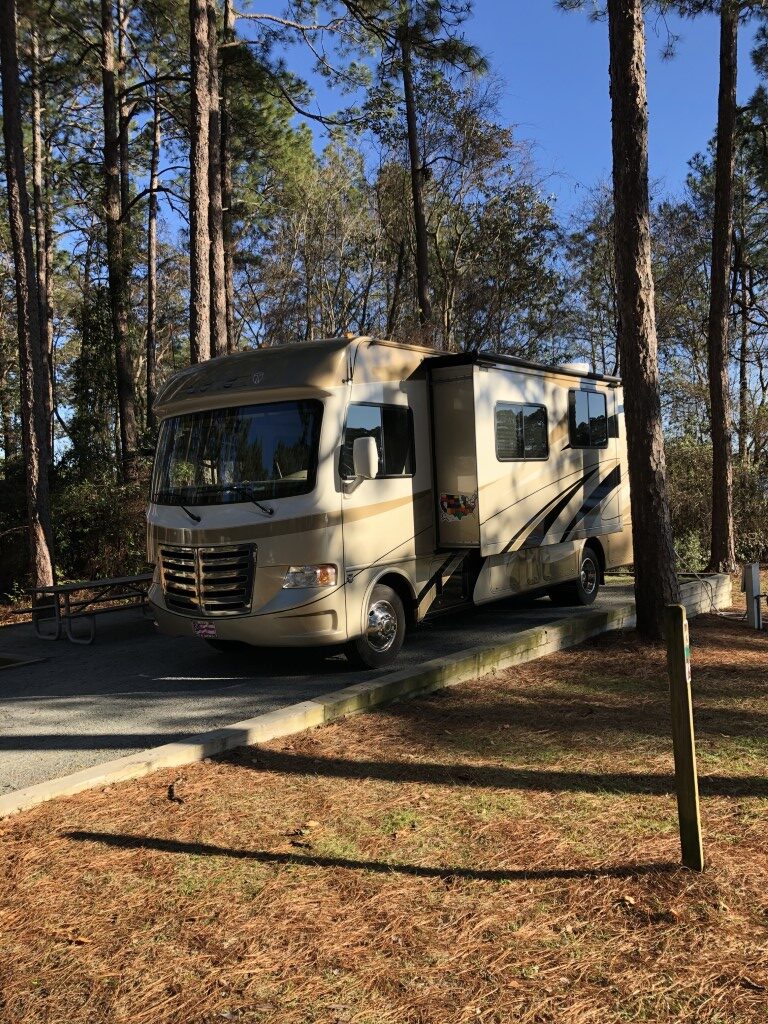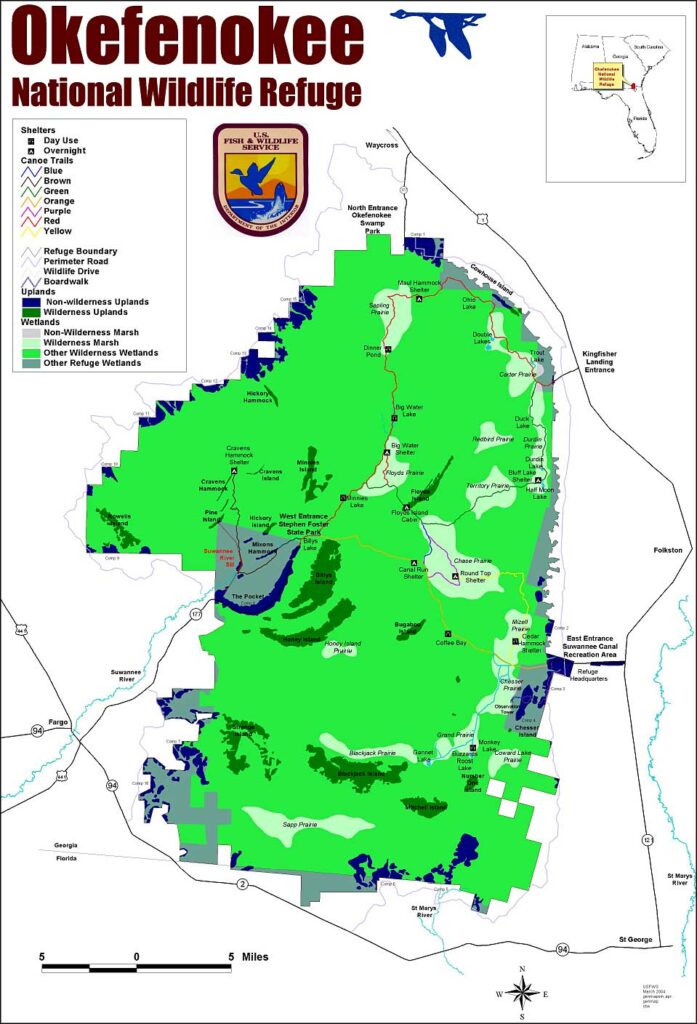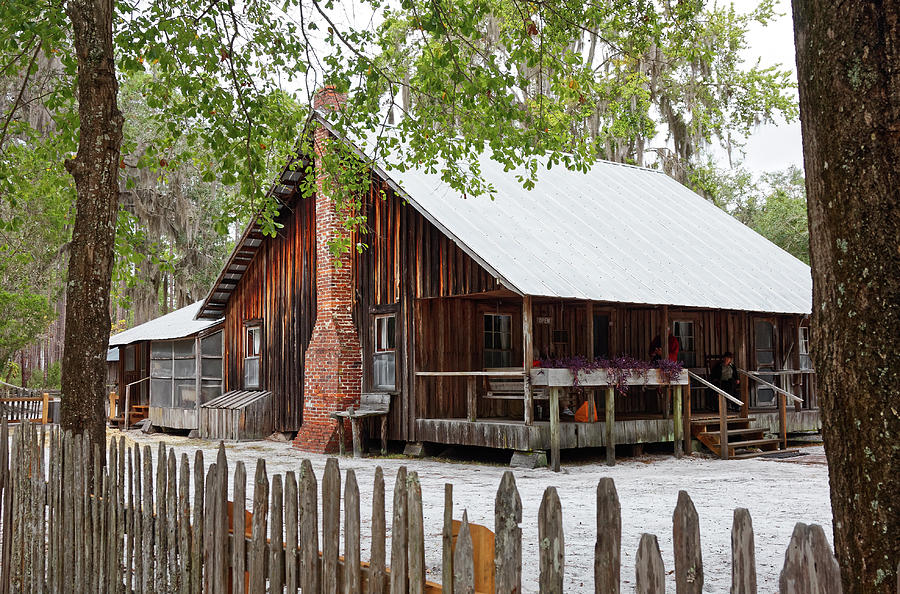We’re in the midst of planning several family-gathering RV trips (including one to Fort Wilderness, the location of the defining broken arm moment exactly one year ago), so we found ourselves antsy to get back into the motorhome and head out somewhere. Anywhere. So, with a break in the grey days of January, it was off to Laura S. Walker State Park for a visit to the Okefenokee National Wildlife Refuge. Which brings a question to mind: why drive 5 hours to see a swamp? It is, well, a swamp. And it’s winter, which means (beside, mercifully, no bugs) no wildlife. And of the area’s 350,000 acres, most are accessible only by canoe, which is off the list for Wendy, who views canoe trips into a swamp as the equivalent of sitting upright in a coffin for day, with added prospects of either drowning or being eaten by an alligator. So, why? Besides being Pogo’s home, is there any reason to visit a swamp?
Yes — this is a great place and we had a wonderful time. Staying in Laura Walker State Park is, like every other Georgia state park, wonderful in and of itself. The campground is perfect, the restrooms are immaculate, and the amenities abundant and worthwhile. We spent our first afternoon there enjoying one of the park’s nature trails that wanders around through the pine forest, with placards placed regularly along the trailside describing the wildlife of the area (none of which we saw, which makes the placards somehow simultaneously irrelevant and necessary) (whatever that means).

But the highlight, as improbable as it may seem, was in fact the swamp. The Okefenokee National Wildlife refuge was established in 1937, back in the good old days when the government, if it wanted to protect nature, actually purchased the land, rather than regulating it into non-use, (thereby sidestepping that pesky little fifth amendment and taking the land without actually having to pay for it). Where was I? Oh yeah … established in 1937. Since we only had a day, and since the best (and only) portion of the area accessible by car is through the east entrance, it was down through Folkston and into the east side we went.

First, a little background about the swamp itself. To start off with, it’s not technically a swamp, it’s a “blackwater wetland” and in fact the largest such wetland in the United States. But it sure looks like swamp, and I suspect “blackwater wetland” is a euphemism for “swamp” foisted on us by activists who think “wetland” connotes something more than “swamp.” Interestingly enough, the swamp is the headwaters of two separate rivers: the Suwanee (which flows into the Gulf) and the St. Mary’s (which does its best to separate Georgia from Florida and then flows into the Atlantic). And the name, “Okefenokee,” is some English version of some Indian word that means “land of trembling earth,” apparently referring to the fact that a large part of the swamp consists of semi-floating masses of peat that shake when you walk on them.
Besides the Indians who used to live here, there were actually a fair number of early pioneers (who must have been really tough dudes), who settled in the area. And actually, their habitations looks a lot better than what you might expect by watching reruns of Swamp People on the Discovery Channel.

Back to the trails. Just inside the entrance is the “Canal Diggers Trail.” Get this. In the 1890s, some dufus came up with idea of “draining the swamp.” (It was the other dufus.) To do this, he tried to dig a canal but ran into two obvious (to me) problems: First, there are billions of gallons of water in the swamp and even if one could drain some portion of the area, water would keep flowing back in. Actually, at one point the “drainage” canal actually began to collect water and refill the swamp. Oops. Second, the whole area consists of sand, which means when you try to excavate a ditch, it has a tendency to collapse back in on itself. So, after a few years of trying, and a well-deserved bankruptcy, the project was abandoned. So, for now, the location of that failed effort makes a really interesting short hike.
The other trail we most enjoyed is actually a 3/4-mile boardwalk (!) to an observation tower.



So, 8 hours (and 11,000 steps) later, we finished the Swamp Island drive. It’s a real compliment to the experience that Wendy, who is about the least swampish person I can imagine, had a great time and was glad to have spent the day in a swamp!
